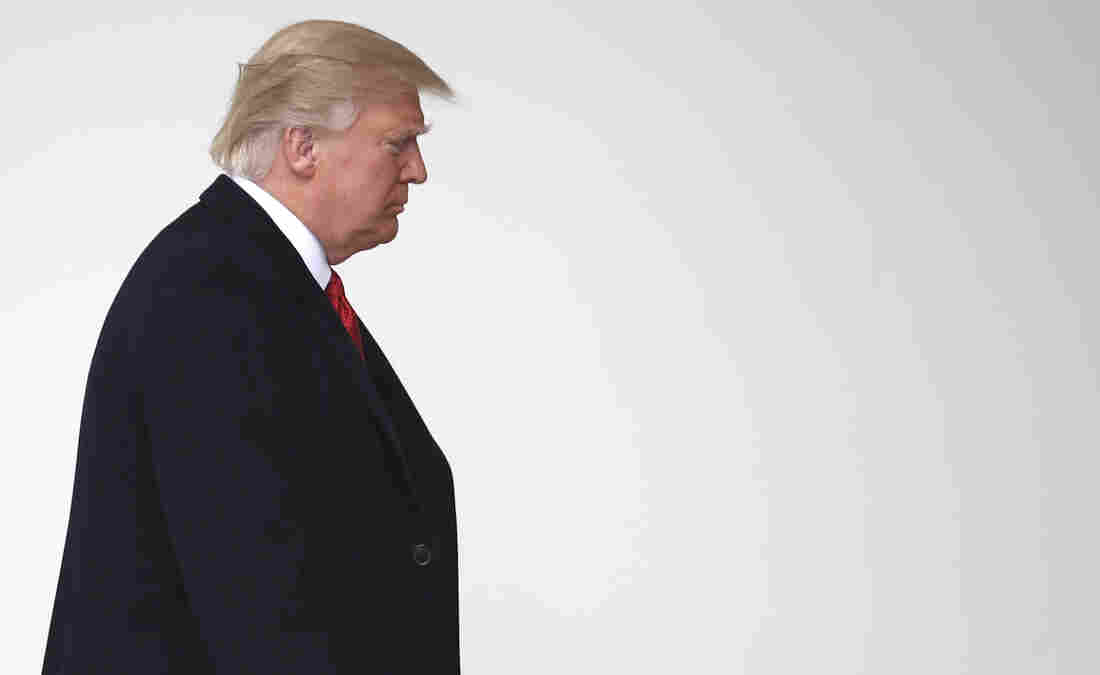Team USA hockey goalie Alex Rigsby defends the goal during a practice session in Plymouth Township, Mich., in December 2016.
Carlos Osorio/AP
hide caption
toggle caption
Carlos Osorio/AP
The U.S. Women’s National Hockey Team — the reigning world champions — won’t be defending their title this year. They’re boycotting the championships as a protest against USA Hockey, citing stalled negotiations for “fair wages and equitable support” from the organization.
The U.S. national team is a dominant player in women’s ice hockey — they’ve medaled in all five Olympic Games that featured women’s hockey and won the world championships seven times since 2000. (Over the same time frame, the men won two Olympic and two World Championship silvers.)
The players are asking for higher wages — pointing out that in the past, USA Hockey paid them $1,000 a month for six months every Olympic cycle, and “virtually nothing” for the other 3 1/2 years. That works out to $1,500 a year.
Forward Meghan Duggan says it’s not fair for USA Hockey to pay them for only six months every four years when they train full time. “It’s 365 days a year to be an Olympic athlete,” she says. “It’s our life, our everything.”
The players do receive year-round support directly from the U.S. Olympic Committee — without which, Duggan says, “there would be no financial survival at all.”
Approximately half of the national team players hold “second or third jobs,” according to a press release from the lawyers representing the team.
Players on the men’s national team can also play on the NHL — where the minimum salary is more than half a million dollars. The NWHL, meanwhile, recently slashed its salaries, which were $10,000-$26,000 before the pay reduction.
In short, there’s “no apples to apples comparison” between the financial positions of the male and female Olympic teams, says John Langel, a lawyer representing the women’s team.
But their protest extends beyond paychecks. The women say there are pervasive, possibly illegal inequities in how USA Hockey treats male and female players — in terms of equipment, meals, hotel accommodations, staffing, marketing and PR, among other things.
The team’s lawyers highlight youth programs, in particular:
“At the younger levels, USA Hockey spends approximately $3.5 million annually to support a schedule of more than 60 games a season for boys participating in its National Team Development Program. There are no comparable development opportunities for girls, and the Women’s National Team plays only nine games in non-Olympic years. Over the course of its yearlong negotiations, the players have made repeated requests of USA Hockey for increased playing opportunities and financial support consistent with the boys’ teams.”
In a press release, USA Hockey said it was “disappointed” by the players’ decision to boycott the championships.
“USA Hockey has a long-standing commitment to the support, advancement and growth of girls and women’s hockey and any claims to the contrary are unfounded,” the organization said.
It also suggested that it has “proactively” increased its financial support for the women’s team and is preparing a package that “could result in each player receiving nearly $85,000 in cash over the Olympic training and performance period.”
Duggans and Langel say that’s misleading. Most of those funds wouldn’t come from USA Hockey. The figure represents mainly the money the players would get anyway from the USOC and is variable, depending on whether they win a medal and what kind.
It also only addresses payments during an Olympic year, not in the other three years that the women have to train and compete, the team says.
Besides, the stipend increase “does nothing to address the marketing and training support [which] is not on par with what it provides to the men’s and boys’ teams,” the women’s team said in a statement.
In the USA Hockey statement, president Jim Smith says, “USA Hockey’s role is not to employ athletes and we will not do so.”
Duggan said that was “difficult” to hear.
“They tell us when to be places, how long to be there. … We base where we live, what we do, when our alarms go off, when we sleep, what we eat, based on their orders, and their anticipation that we will show up and perform for them when asked.
“It is our life, every day, every minute — it’s for USA Hockey and this program.”
Let’s block ads! (Why?)




